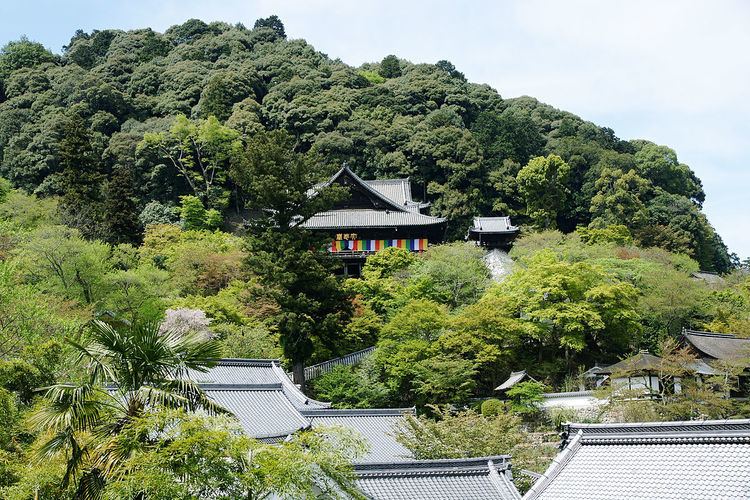Affiliation Shingon-shu Buzan-ha Completed 8th century (727?) | Phone +81 744-47-7001 | |
 | ||
Address 731-1 Hase, Sakurai, Nara Prefecture 633-0112, Japan Similar Murō‑ji, Tanzan Shrine, Hasedera Station, Ōmiwa Shrine, Oka‑dera Profiles | ||
Tokyo vlogs 24 il grande buddha e il tempio hase dera di kamakura ita
Hase-dera (長谷寺) is the main temple of the Buzan sect of Shingon Buddhism. The temple is located in Sakurai, Nara Prefecture, Japan. The Main Hall is a National Treasure of Japan.
Contents
Overview
According to the description on the bronze plaque known as the Hokke Sessō-zu (銅板法華説相図, dōban hokke sessō zu), which is enshrined at Hase-dera, the temple was first built in 686 and dedicated to Emperor Tenmu, who was suffering from a disease. Later, in the year 727, the temple was expanded by order of Emperor Shōmu and a statue of the eleven-faced Kannon was placed near the original temple that enshrined the bronze plaque. The temple has been burned down and rebuilt as many as ten times since the 10th century.
During the Heian period the temple was favored by members of the nobility such as the authors of the Kagerō Nikki and the Sarashina Nikki. Hase-dera was consistently popular with visitors, helped by the fact it was situated on what was then the route to the Ise Shrine. Later still, Hase-dera flourished as one of the centers of the reformed Shingon Buddhism, particularly after the arrival of priest Sen'yo from Negoro-ji in 1588.
The current Main Hall is a reconstruction of 1650 built using donations from Tokugawa Iemitsu. A covered wooden staircase (登廊, noborirō), 200 metres long, leads to the Hall from the Niō Gate. Visitors are especially numerous in the spring, when the 700 Chinese peonies that line the staircase are in bloom, and in the fall, when the leaves of the many maple trees in the temple grounds have turned red.
Treasures
The designated Important Cultural Properties at Hase-dera include:
